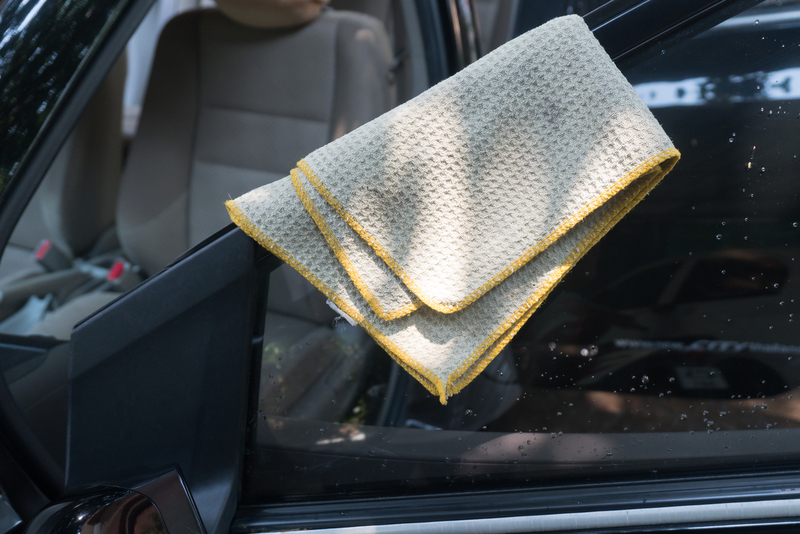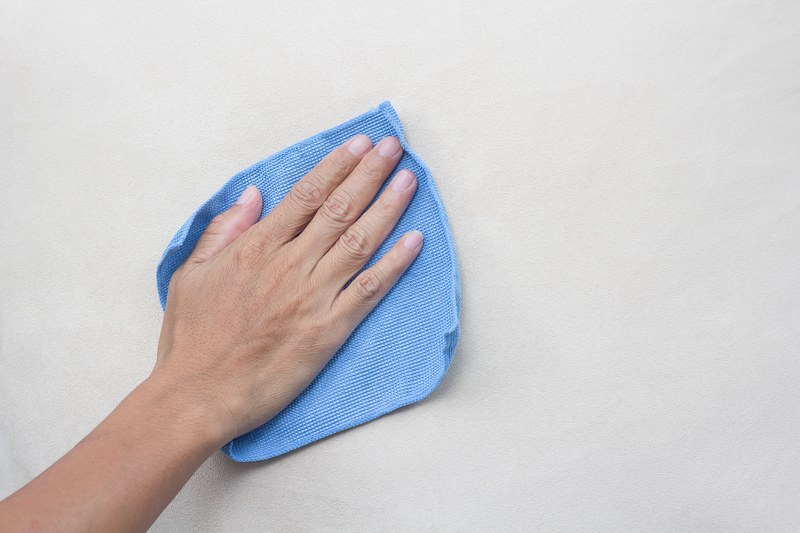The Ultimate Guide to Cleaning Window Sills from Mould
Posted on 10/09/2025
The Ultimate Guide to Cleaning Window Sills from Mould
Struggling with persistent black spots or an unpleasant musty smell near your windows? Mould on window sills is a common household issue that affects not only the appearance of your home but also the health of its occupants. In this comprehensive guide, you'll learn everything you need to know about cleaning window sills from mould, tackling the issue at its source, and keeping your window frames spotless for years to come.
Why Does Mould Grow on Window Sills?
Mould flourishes in damp, poorly ventilated areas. Window sills, being exposed to condensation from temperature differences and incoming rainwater, present the perfect breeding ground. Left unchecked, mould spores can spread rapidly, damaging window frames and creating health problems.
- High humidity and condensation
- Poor air circulation
- Leaky windows and gaps
- Lack of regular cleaning
Health Risks: Exposure to mould can cause allergies, asthma attacks, and respiratory issues.
That's why it's critical to remove mould from window sills and keep your home safe.

Signs You Need to Clean Mould from Window Sills
Knowing when to act is crucial. Look out for these signals:
- Visible black, green, or grey spots on the window sill or frame
- Peeling paint or bubbling varnish
- Musty, unpleasant odour near windows
- Increased allergy symptoms at home
If you notice any of these, it's time for a thorough clean!
Preparing for Cleaning: What You'll Need
Before you begin to remove mould from window frames, gather the right supplies to ensure a safe and effective process.
Essential Tools and Materials
- Protective gloves and face mask (to avoid inhaling spores)
- Safety goggles
- Microfiber cloths or disposable paper towels
- Soft brush or old toothbrush
- Bucket of warm water
- Spray bottle
- Scraper or putty knife (for stubborn mould)
Best Cleaning Solutions for Mould Removal
- White vinegar (natural and effective mould killer)
- Baking soda (for scrubbing and deodorising)
- Hydrogen peroxide (3%) (for tougher mould infestations)
- Commercial mould removers (ensure they're safe for your window frame material)
- Dish soap (for general cleaning)
Tip: Avoid using bleach on wood, as it can cause discoloration and damage the surface.
Step-by-Step Guide: How to Clean Mould from Window Sills
Follow these expert instructions to clean mould from window sills with precision and care.
1. Protect Yourself and the Area
- Wear gloves, goggles, and a mask before you start.
- Open windows for ventilation, or use a fan if possible.
- Lay down old towels or sheets around the sill to catch any drips and protect your flooring.
2. Remove Loose Mould
- Gently brush off dry mould with the soft brush or toothbrush. Do not scrub vigorously - you want to avoid sending spores airborne.
- Dispose of the brush or clean it thoroughly after use.
3. Apply Mould Cleaning Solution
- Fill a spray bottle with undiluted white vinegar, hydrogen peroxide, or a suitable commercial mould remover.
- Thoroughly spray the affected area, ensuring all mould spots are saturated.
- Let the solution sit for 10-15 minutes to break down the mould.
4. Scrub and Clean
- Use a microfiber cloth or paper towel to wipe away the mould and cleaning solution.
- Stubborn mould? Sprinkle some baking soda on the sill and gently scrub with a brush.
- For hard-to-reach crevices, use a toothbrush or cotton swab.
5. Rinse and Dry
- Rinse the cleaned area with a clean, damp cloth to remove any remaining residue.
- Dry the window sill thoroughly using a fresh towel or cloth. This step is crucial for preventing future mould growth!
6. Repeat as Needed
- If you notice remaining spots, repeat the above steps until the mould is completely gone.
7. Dispose of Contaminated Materials
- Throw away any disposable towels, masks, or gloves used during cleaning.
- Wash reusable cloths and tools in hot water to kill any lingering spores.
Cleaning Different Types of Window Sills
Not all window sills react to mould - or cleaning agents - the same way! Here's how to approach various materials:
Wooden Window Sills
- Stick to natural cleaners like vinegar, and avoid prolonged moisture exposure.
- Sand lightly to remove deep-set staining, then repaint or seal as needed.
UPVC or Vinyl Window Sills
- Most commercial cleaners are safe, but test a small area first.
- Use a non-abrasive sponge to avoid scratching the surface.
Stone or Tile Window Sills
- Vinegar is generally safe, but avoid acidic cleaners on natural stone (marble, granite).
- Seal stone sills after cleaning to minimise future mould issues.
Preventing Mould Growth on Window Sills
Prevention is always better than cure! After cleaning your window sills, follow these tips to keep them free from mould:
- Improve ventilation in rooms prone to condensation. Open windows often or use extractor fans.
- Wipe down window sills and frames regularly, especially after rain or high humidity.
- Use dehumidifiers in problem areas.
- Seal leaks and gaps around windows to keep moisture out.
- Keep blinds and curtains open during the day to let sunlight in (mould hates UV light!).
- Consider installing double glazing to reduce condensation build-up.
DIY vs. Professional Mould Removal
While cleaning mould from window sills is manageable for most homeowners, certain scenarios may call for expert help:
- Large or severe mould infestations (area greater than one square metre)
- Mould keeps coming back despite repeated cleaning
- You notice mould spreading to walls, ceilings, or other rooms
- Family members have severe allergies or respiratory illness
In such cases, it's best to contact a qualified mould remediation specialist to ensure safe and thorough removal.

Frequently Asked Questions
What kills mould on window sills the best?
White vinegar, hydrogen peroxide, and specialised mould removal sprays are all highly effective at killing mould on window frames and sills. Vinegar is a favourite for its natural, fume-free properties.
Can I use bleach to clean mould off window sills?
Bleach can remove surface mould on non-porous surfaces, like vinyl and uPVC, but is best avoided on wood. For most scenarios, vinegar or hydrogen peroxide are safer and just as effective.
How can I keep mould from returning?
The key: keep window sills dry and well-ventilated. Regularly clean and check for leaks, use a dehumidifier, and ensure sunlight reaches the area when possible.
Does mould on window sills always mean a leak?
Not always. High humidity and daily condensation can create the same problem without a major leak. However, if you suspect a persistent moisture source, investigate for hidden leaks and address them promptly.
Conclusion: Enjoy Spotless, Healthy Window Sills
Mould on window sills doesn't just look unsightly - it puts your home's structural integrity and your own wellbeing at risk. With the steps and tips shared in this ultimate guide to removing mould from window sills, you'll be well-equipped to tackle the problem at its root.
- Act quickly if you spot signs of mould.
- Choose the right cleaning agents for your window sill material.
- Keep your home dry, ventilated, and well-maintained to prevent regrowth.
Regular attention ensures your window sills remain pristine, your indoor air stays fresh, and your home is a healthier place for everyone.
Share this guide with friends and family who want to keep their homes mould-free!




